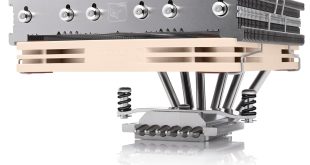Today for installation, we are highlighting images showing the installation on a Gigabyte X58 Assassin motherboard and Asus Rampage III Black Edition.
The Assassin motherboard is one of the finest products we have reviewed this year, and is a worthy partner for a liquid cooling system, especially as the overclocking options are so comprehensive and detailed.
The adhesive backplate is attached without problem and four metal bolts are passed through to the front of the board. There are a possible twelve positions as can be seen in the images above. This is to cater for various slot sizes.
As we are using an Intel 1366 motherboard, the blue offset clips are used with the retaining mount system, as seen above. This retaining ring should be left in a loose position so the main cooling head can be inserted under it and then rotated into a locking position. This is a very similar method to the Corsair H50 and H70 coolers of yesteryear. It is a little fiddly, but doesn't really cause any issues.
This fan is then attached into the 120mm location. Antec recommend the fan is locked into an exhaust position so warm air is expelled from within, keeping the traditional air flow mechanic in place. As some of you may remember, Corsair wanted the H50 and H70 fans to be mounted in an intake position, therefore pulling in cool air over the radiator. The idea was fine in theory, but we didn't think it worked well within the typical airflow of a normal chassis design.
When the radiator is fixed then the cooling head can be twisted into position underneath the retention block. When completed, then the four screws can be tightened to maintain good clamping pressure.
Installation took about 15 minutes the first time, but would take less on subsequent reinstalls.
 KitGuru KitGuru.net – Tech News | Hardware News | Hardware Reviews | IOS | Mobile | Gaming | Graphics Cards
KitGuru KitGuru.net – Tech News | Hardware News | Hardware Reviews | IOS | Mobile | Gaming | Graphics Cards








